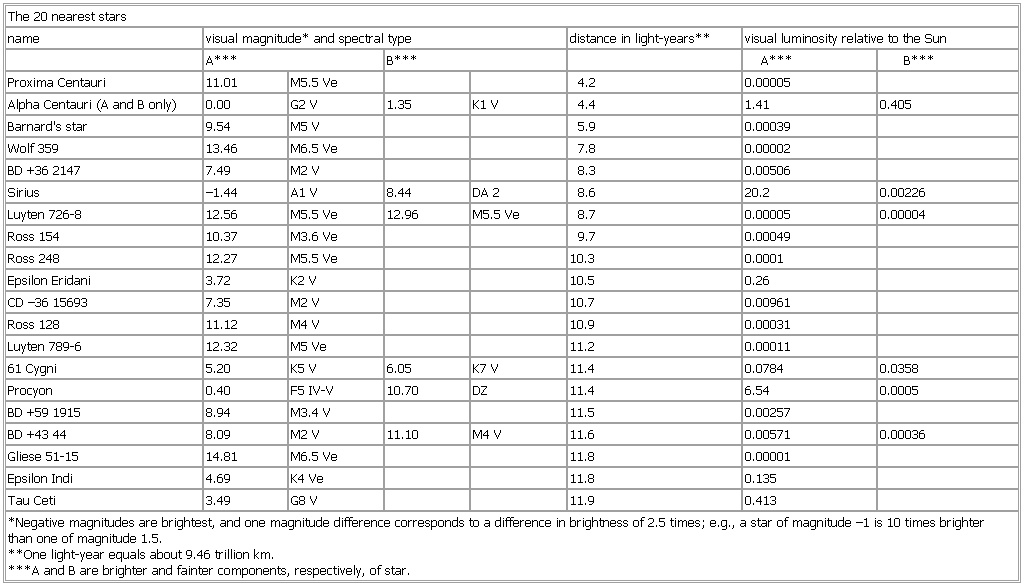- 20 nearest stars
-
▪ TableThe 20 nearest starsname visual magnitude* and spectral type distance in light-years** visual luminosity relative to the SunA*** B*** A*** B***Barnard's star 9.54 M5 V 5.9 0.00039Wolf 359 13.46 M6.5 Ve 7.8 0.00002BD +36 2147 7.49 M2 V 8.3 0.00506Luyten 726-8 12.56 M5.5 Ve 12.96 M5.5 Ve 8.7 0.00005 0.00004Ross 154 10.37 M3.6 Ve 9.7 0.00049Ross 248 12.27 M5.5 Ve 10.3 0.0001Epsilon Eridani 3.72 K2 V 10.5 0.26CD –36 15693 7.35 M2 V 10.7 0.00961Ross 128 11.12 M4 V 10.9 0.00031Luyten 789-6 12.32 M5 Ve 11.2 0.00011BD +59 1915 8.94 M3.4 V 11.5 0.00257BD +43 44 8.09 M2 V 11.10 M4 V 11.6 0.00571 0.00036Gliese 51-15 14.81 M6.5 Ve 11.8 0.00001Epsilon Indi 4.69 K4 Ve 11.8 0.135Tau Ceti 3.49 G8 V 11.9 0.413*Negative magnitudes are brightest, and one magnitude difference corresponds to a difference in brightness of 2.5 times; e.g., a star of magnitude –1 is 10 times brighter than one of magnitude 1.5.**One light-year equals about 9.46 trillion km.***A and B are brighter and fainter components, respectively, of star.See as table:

* * *
Universalium. 2010.
